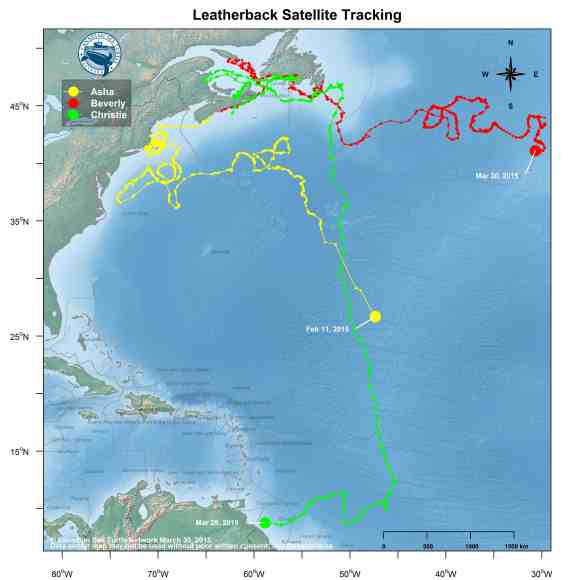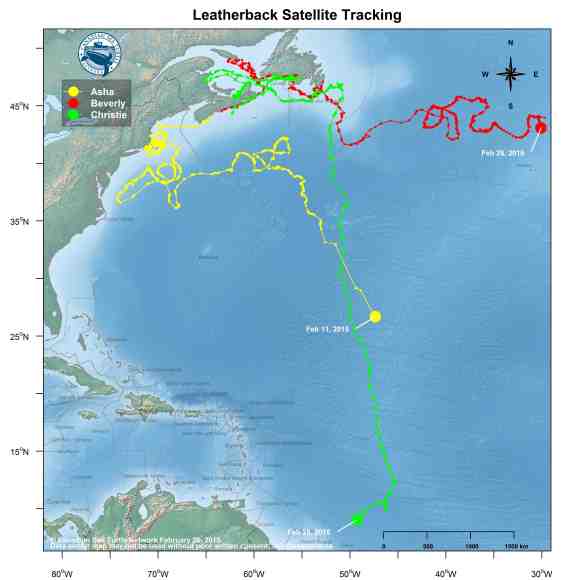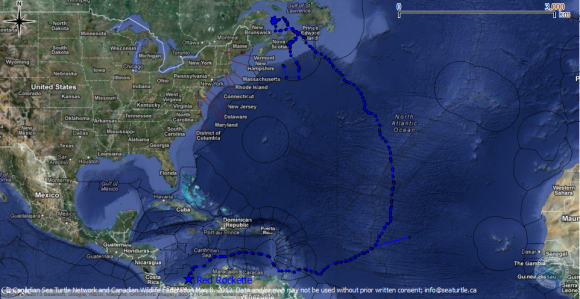Christie’s tag stopped transmitting on Saturday.
We are so disappointed. She was just 300 kilometers away from where we expected her to nest. She had logged approximately 11,500 kilometres since we tagged her.
Data from the tag on March 28 showed that she was diving normally and that the tag had plenty of battery. But, as you may remember, Christie had just started onto the shelf waters, a place where we know leatherbacks mate. It is our best guess that a male turtle damaged the antenna of the transmitter or knocked the tag off her altogether.
There is also always a possibility that she was caught in fishing gear.
If indeed, as we hope, Christie simply lost the tag mating, then we will keep our fingers crossed that someone finds our turtle when she eventually hauls up on the nesting beach. She should still have her flipper tags safely in place as well as her microchip. And there is a chance that her transmitter is still on. If that’s the case, the transmitter can be recovered—along with all of the important data it contains—if someone finds her. This happened before in the amazing story of Red Rockette. So we remain cautiously optimistic.
But we will miss following her movements. Christie was a bright spot in our days as we checked always with excitement to see how far she’d travelled. What a privilege it was to watch her remarkable journey (11,500 kilometres!!) up close.

















